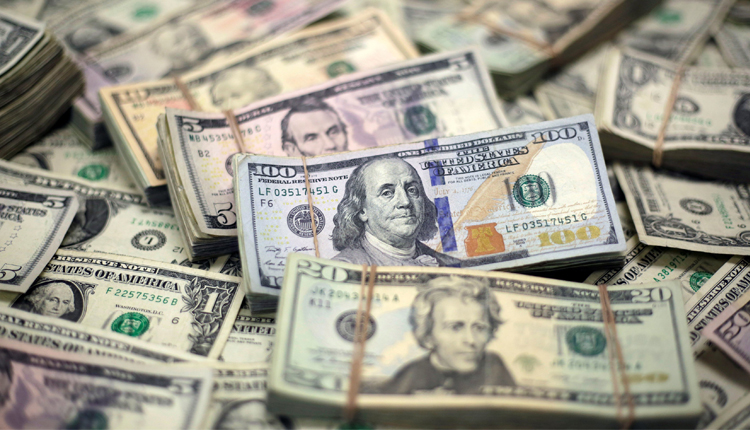The dollar stayed near its 2018 peak on Monday after U.S. jobs and wages data did little to temper perceptions of strength in the U.S. economy, though renewed concerns about trade frictions could cloud its outlook.
The dollar index stood at 92.461, down 0.1 percent but still near Friday’s high of 92.908, which was its firmest level since late December.
The dollar index has risen for three straight weeks, maintaining its strength after Friday’s mixed U.S. data.
The U.S. economy added fewer jobs than expected and the average hourly earnings, closely watched for signs of inflationary pressures, rose a less-than-expected 0.1 percent in April, leaving the annual increase at 2.6 percent.
The unemployment rate dropped to near a 17-1/2-year low of 3.9 percent, although this was driven in part by Americans leaving the labor force.
None of this changed the perception that the Federal Reserve will likely hike interest rates at least twice, and possibly three times, by year-end.
In contrast, recent data suggested Europe’s stellar growth last year is losing momentum, leading speculators to trim bets on the single currency on expectations the European Central Bank will wind down its stimulus.
The euro changed hands at $1.1962, not far from Friday’s four-month low of $1.1910.
Data from U.S. financial watchdog published late on Friday showed speculators’ net long position in the euro in Chicago’s futures exchange declined only slightly in the latest week.
They held 120,568 contracts of net short positions, down from a record 151,476 set last month but still at a high level.
A wider measure of dollar positioning that includes contracts on some emerging market currencies showed net dollar shorts shrank to $18.32 billion, from a seven-year high of $28.18 billion two weeks earlier.
“Speculators’ positioning has gone to extreme levels as they had been selling the dollar continuously,” Yukio Ishizuki, senior strategist at Daiwa Securities.
Concerns about U.S. President Donald Trump’s protectionism was one big reason many investors had shied away from the dollar earlier.
Some market participants expect worries over a trade war could return after talks between the United States and China produced little apparent progress.
In a sign that the trade tension is spilling over to other issues, Beijing and Washington came to loggerheads over how to refer to Taiwan, Hong Kong and Macau.
“Trade issues are likely to persist towards the U.S. mid-term elections. So in the long run, the dollar is likely to decline,” said a currency trader at a Japanese bank.
Traders also kept an eye on the fate of Iran’s 2015 nuclear deal, from which Trump has threatened to pull out.
An escalating diplomatic standoff could have innumerable repercussions, including a further rise in oil prices and damage to investors’ risk appetite.
Trump has said that unless European allies rectify “flaws” in Tehran’s deal with world powers by May 12 he will refuse to extend U.S. sanctions relief for Iran.
Elsewhere, the British pound traded at $1.3538, near its four-month low of $1.3487 touched on Tuesday.
The dollar stood little changed at 109.10 yen, off its three-month high of 110.05 yen.
The yen’s rebound was in part driven by short-covering by Japanese margin traders, especially against the Turkish lira, which fell to record lows during Japan’s Golden Week holidays. The lira fell more than 4 percent last week versus the dollar.
Source: Reuters



